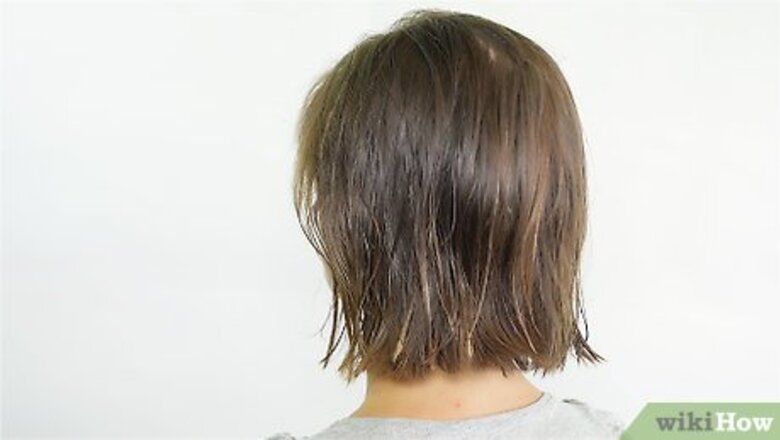
views
X
Research source
Especially when you are transitioning from long hair, you might feel uninspired about how to style your bob. There are several easy, popular ways of styling bobs that work on any hair type.
Styling a Bob With a Round Brush
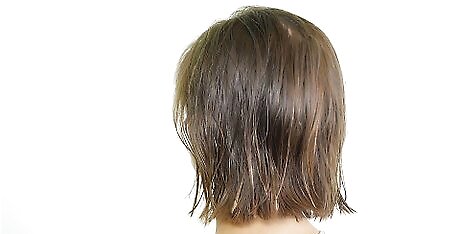
Dampen your hair or leave it wet after a shower. This method is one of the most common ones for styling a bob, and it starts with your hair being wet. Spray or wet your hair if it is dry, or leave it wet after your shower before doing anything else to it.
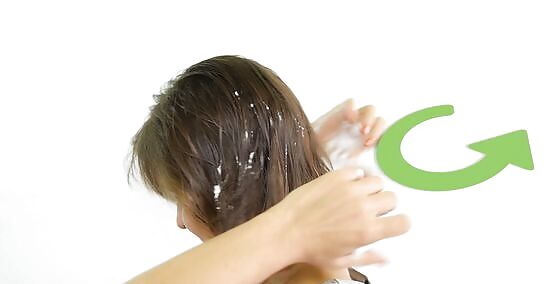
Massage a styling agent, such as mousse or soft-hold gel, into your hair. Put a quarter-sized amount of styling agent in the palm of your hand. Rub your hands together to spread it on both palms, and then run your fingers through your hair to massage it in.
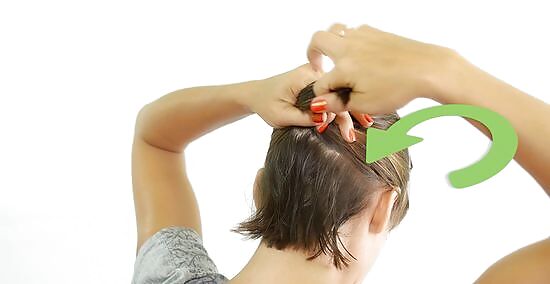
Clip or tie up the top two-thirds of your hair. You will work through this style in layers, so have a hair clip or hair tie to hold sections of your hair out of the way while you work. Part your hair horizontally just above your ears. Lay your thumbs on either side of your head just above your ears, and run them back along your scalp to create the part. Lift all of the hair above your thumbs and clip or tie it up out of the way. Leave the rest of your hair hanging straight down.
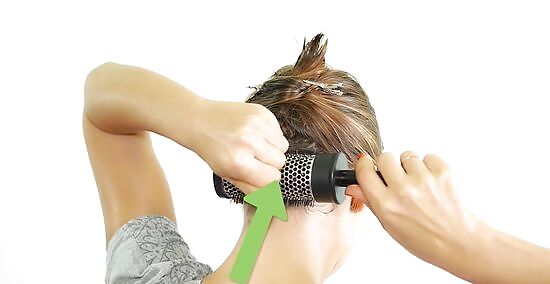
Lay a section of your loose hair over a round brush. Take a 2-inch section of the loose hair and set it on top of your round brush. Feel free to run the brush down the length of your hair, turning slightly as you go, to work out any tangles.
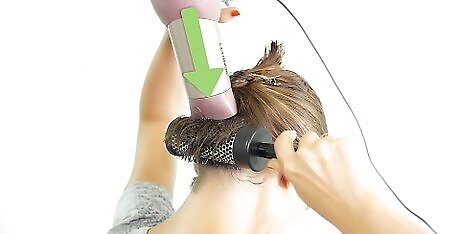
Place the blow dryer at your roots above where the round brush sits and aim it down toward your ends. The blow dryer should always point down the length of your hair because pointing it at or up the length of your hair will result in frizz.
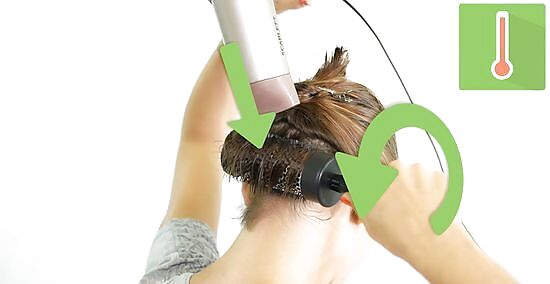
Blow dry your hair over the round brush, turning the brush as you pull it down through your hair, creating a nice curl inward at your ends. Because you have a bob haircut, you likely do not have a lot of length to your hair. You may not need to move the round brush at all if it is short enough, but in most cases, you will have to pull the brush down through your hair a bit. Continuously turn the round brush gently to help train your hair into the inward curl. This involves a quick wrist movement to flick the round brush back up to your roots, once you get to the ends. Completely blow dry one section of hair before moving onto the next. Moving on before a section is arid will cause it to lose its shape.

Repeat blow drying sections of hair over the round brush until you complete the bottom section of loose hair. Working in 2-inch sections, you will probably have 3-4 sections of hair to work through with the round brush and blow dryer. When you are done, the bottom layer of your hair should have a nice, rounded curve inward toward your neck and chin, setting a foundation for the upper layers.
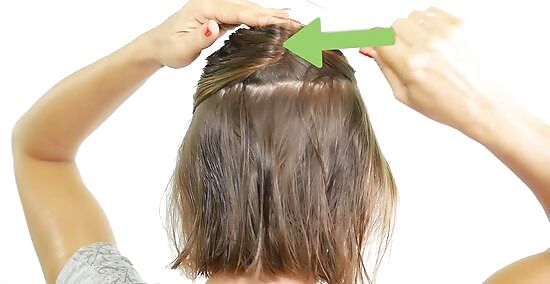
Part your hair to clip or tie up the top third of your hair. You will now prepare to work on the middle layer of your hair, styling it to match the bottom layer that you just completed. Set your thumbs at your hairline at a slight angle upward from the arches of your eyebrows. Slide your thumbs back along your scalp until they meet at the crown of your head. Clip or tie the top third of your hair up on top of your head.
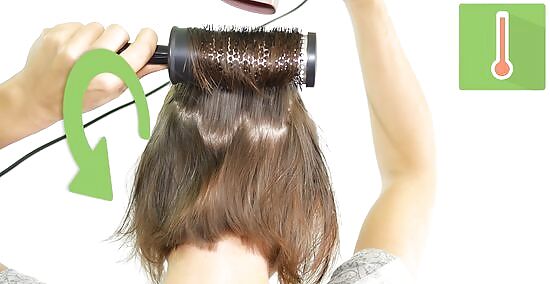
Separate your hair into 2-inch sections and blow dry each section over the round brush. Just as you did for the bottom layer, you will now style the middle layer of hair over the round brush. Remember to place the round brush and the blow dryer at your roots. Aim the blow dryer down the length of your hair. Also remember to turn the round brush gently as you blow dry continuously. This layer of hair will be longer than the bottom layer, so you will have to repeatedly pull the brush down the length of your hair and then start back over at the roots.

Work all the way around your head on the middle layer, blow drying each section fully before moving onto the next. The inward curl at your ends should fall right over top of the gentle curl in the bottom layer. Now that you are styling hair at the sides of your head, more hair should curl inward slightly toward your chin.
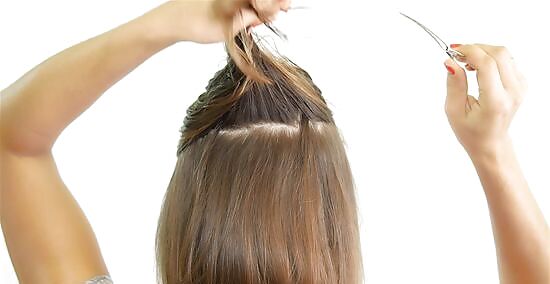
Release the top third of hair and place your part. You can part your hair in the centre or off to one side. Create your part where you would like it to be, using a comb. Allow your loose hair to fall freely.
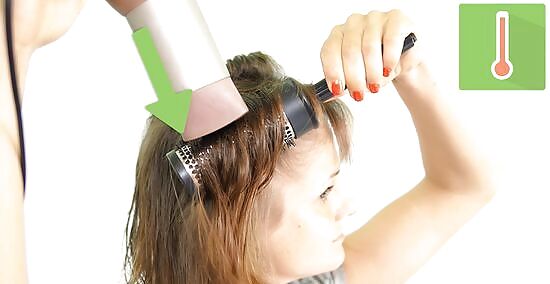
Repeat again blow drying 2-inch sections of hair over the round brush. Gently lift 2-inch sections of hair and place them over the round brush, getting a good handle on it, to blow dry. Aim the blow dryer down the length of your hair, from your roots, so that you do not make your hair frizzy. Continuously turn the round brush in your hand, under the section of hair, so that a slight curl is created at the ends of your hair. This will be the longest layer of hair, so you will have to pull the brush down through your hair and then start back up at the roots repeatedly until the section is dry.
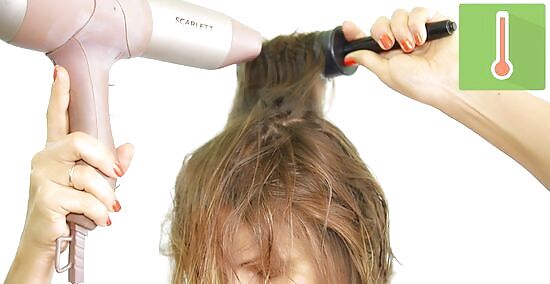
Dry all sections of the top layer of hair on all sides of your head. Move from section to section, drying each section over the round brush. Again, this layer should sit on top of the middle layer, with the curl inward at the ends matching that of the layers beneath.
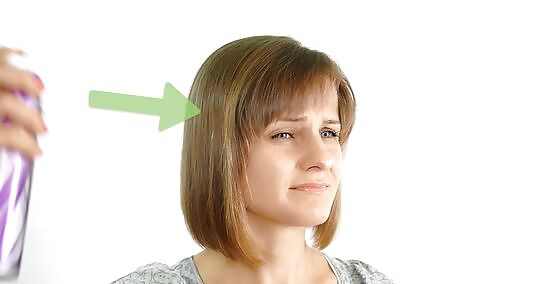
Finish with hairspray. If you are concerned that the mousse or styling gel applied to your hair at the start of this process will not hold it in place, you can gently spray your hair with hairspray to ensure that it will hold the style.
Straightening Your Bob

Plug in your flat iron and turn it on to preheat. The temperature setting is your discretion, but a normal temperature range for the flat iron is between 350-370 degrees. Allow your flat iron to preheat while you do the following steps to prepare.
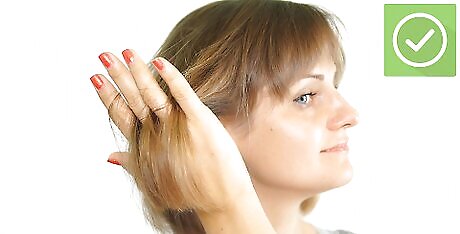
Make sure that your hair is dry. You should not try to straighten your hair while it is still wet, because it will not actually be straight when it dries. If your hair is not already dry, use your blow dryer to thoroughly dry it.

Apply a heat protectant and/or styling agent to your hair. Many salon professionals recommend applying a heat protectant product to your hair before using heat styling tools, like the flat iron. Oftentimes, these are sprays that you can spray on your hair section-by-section as you work or all at once. You can also apply a mousse or gel that is safe to use on dry hair, if you like. This will help hold your straight hair for a longer period of time.

Secure the top two-thirds of your hair with a clip or hair tie. You will straighten your hair in layers, so use a hair clip or ponytail holder to hold sections of your hair out of the way while you work. Part your hair horizontally just above your ears. Lay your thumbs on either side of your head just above your ears, and run them back along your scalp to create the part. Lift all of the hair above your thumbs and clip or tie it up out of the way. Leave the rest of your hair hanging loose.
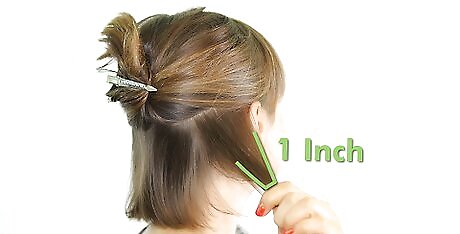
Separate a 1-inch section of hair with your fingers. Clean away any stray hairs or tangles so that the flat iron will move cleanly over the section of hair. Remember to spray heat protectant on your hair, if you like to apply it section-by-section as you go.
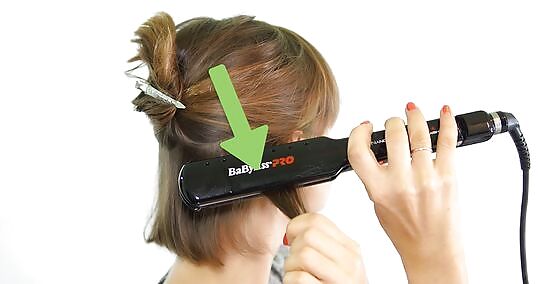
Clamp the flat iron over the section of hair at your roots and gently drag the flat iron all the way down to your ends. This should be done in one fluid motion without stopping. Stopping somewhere down the length of your hair will create a kink in your hair that will be hard to remove. Avoid clamping the flat iron too tightly, as you could break or burn off strands of hair. Once should be enough, but if your hair is not as straight as you would like it, you can run the flat iron over that section another time.
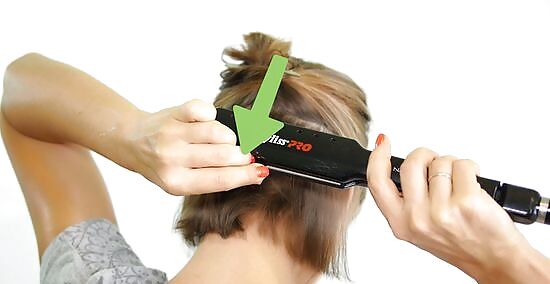
Repeat straightening 1-inch sections of hair with the flat iron all around your bottom layer. Work your way around the bottom layer of your hair until you are satisfied. Remember to spray heat protectant product as needed.

Clip or tie up the top third of your hair. You will need to get the top third of your hair out of the way so that you can straighten the middle layer of your hair. Set your thumbs at your hairline at slight angle upward from the arches of your eyebrows. Slide your thumbs back along your scalp until they meet at the crown of your head. Clip or tie the top third of your hair up on top of your head.
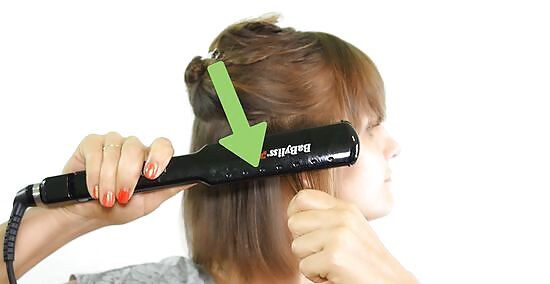
Straighten 1-inch sections of your hair around the middle layer. Working as you did before, separate small sections of hair to straighten with your flat iron. Spray heat protectant as needed on your hair. Smooth away any stray hairs and detangle any knots before running your flat iron over each section of hair. Work all the way around your head, and check for missed chunks of hair as you go to make sure it all gets straightened.

Let loose the top third of your hair. Remove the clip or hair tie from the top third of your hair. Part it where you would like, either in the center or off to one side, using a comb. Gently comb through your hair to remove any tangles and to help your hair lie flat.
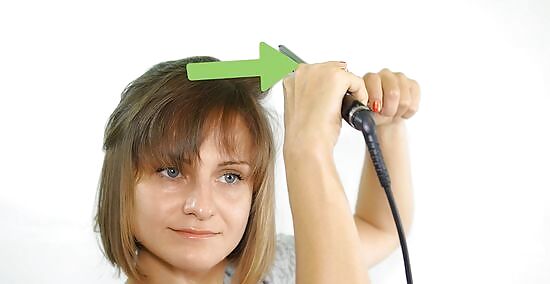
Separate small sections of hair in the top layer and straighten each one. Using the same method as before, run your flat iron over small sections in this top layer of hair. Check for any missed chunks of hair to be sure to get all of your hair straightened.
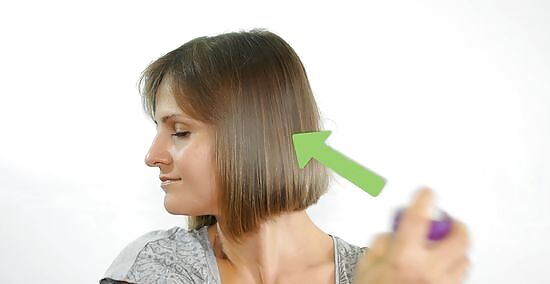
Finish with hairspray, if desired. If you would like to add extra holding power, you can spritz your hair with hairspray to assist in maintaining straight hair longer.
Curling a Bob With a Curling Iron or Wand

Plug in your curling iron or wand and turn it on to preheat. Set the temperature to your preference, being sure not to set it too hot to avoid burning your hair or your skin. Allow the curling iron or wand to preheat while you complete the following steps to prepare.
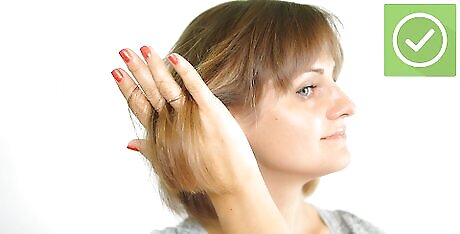
Ensure that your hair is dry. If your hair is not already dry, use your blow dryer to thoroughly dry it. Your hair will not curl if it is still wet. Some salon professionals do claim that curls hold better in dirty hair, so it may be beneficial to not wash your hair for a day or two prior to curling it.
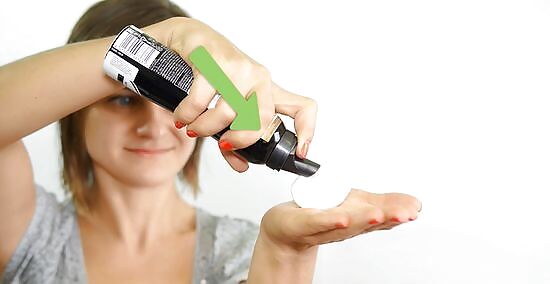
Apply a styling agent to your hair. Choose a mousse or gel that is safe to use on dry hair and that will help hold your curls.
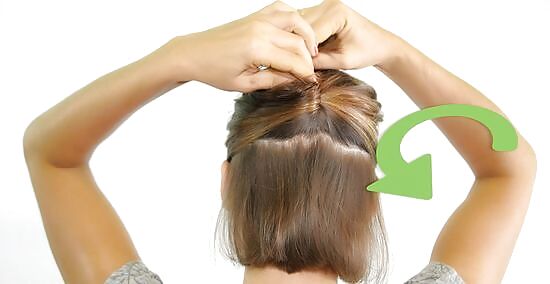
Hold up the top two-thirds of your hair with a clip or hair tie. It is easiest to curl your hair in layers so that missed strands of hair are quicker to find. Part your hair horizontally just above your ears. Lay your thumbs on either side of your head just above your ears, and run them back along your scalp to create the part. Lift all of the hair above your thumbs and clip or tie it up out of the way. Leave the rest of your hair hanging loose.
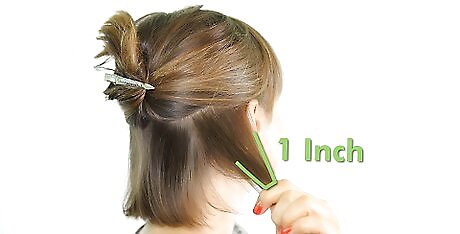
Part a 1-inch section of hair with your fingers. Clear away any stray hairs or tangles so that the hair curls properly. You can apply heat protectant to your hair as your work section-by-section. The heat protectant product will help protect your hair from damage from the hot curling iron or wand.
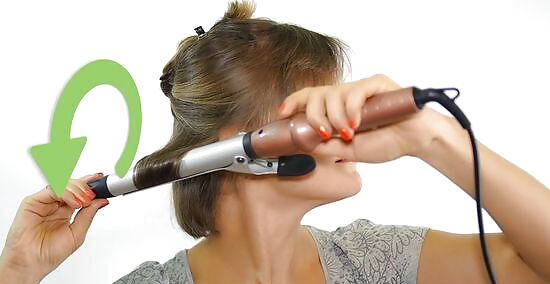
Wrap the section of hair around the barrel of the curling iron or wand. Take care not to touch the tool with your fingers as you wrap your hair around it, so that you do not burn yourself. Especially when using a curling wand, wrapping your hair around the barrel more times results in tighter curls, while wrapping it less times results in gentle waves. If using a curling iron, lower the clamp over your hair and hold it for 10-15 seconds before removing it from your hair. If using a curling wand, hold the ends of that section of hair a short distance away from it, to avoid burning yourself, and hold the wand in place for 10-15 seconds before pulling it out of your hair.

Repeat curling small sections of hair around the bottom layer of your hair. Be sure to check for any stray chunks of hair that did not curl well or did not get curled at all before moving onto the next layer of hair.
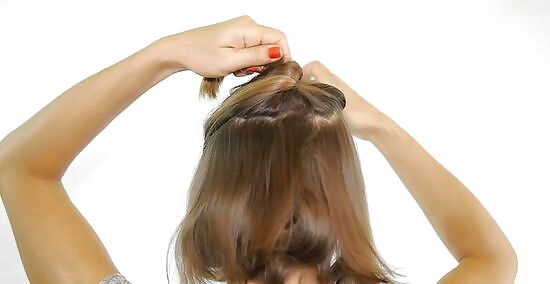
Secure the top third of your hair by clipping it or putting it in a hair tie. The top third of your hair needs to be out of the way so that you can curl the middle layer of your hair. Set your thumbs at your hairline at slight angle upward from the arches of your eyebrows. Slide your thumbs back along your scalp until they meet at the crown of your head. Clip or tie the top third of your hair up on top of your head.

Curl 1-inch sections of your hair all around the middle layer. Moving just as you did before, separate small sections of hair to curl with your curling iron or wand. Spray heat protectant as needed on your hair. Smooth away any stray hairs and detangle any knots before wrapping each section of hair around your curling iron or wand. Work all the way around your head, and check for missed chunks of hair as you go to make sure it all gets curled. It is especially important now to look for straight chunks of hair, because there is more loose hair hanging down to hide them.
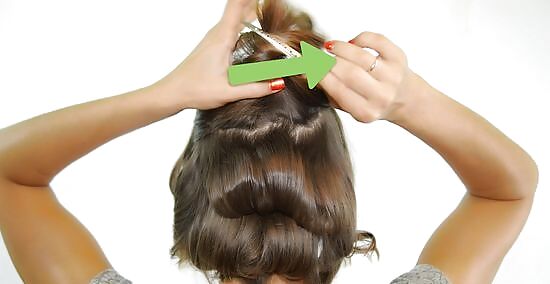
Release the top third of your hair from the hair clip or tie. Part your hair where you would like, either in the center or off to one side, using a comb. Gently run your fingers through your hair to remove any tangles and to help your hair lie flat.
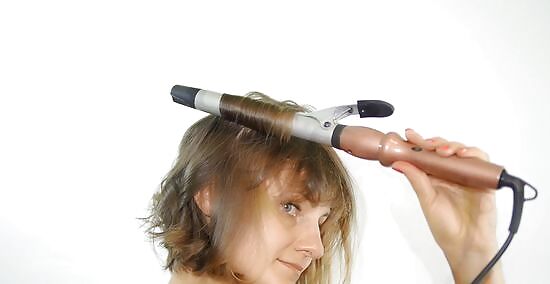
Separate small sections of hair in the top layer and curl each one. Continuing to use the same method, curl 1-inch sections of your hair all around the top layer of your head. Check for any missed chunks of hair to be sure to get all of your hair curled. Again, be extra vigilant in looking. It helps to have another person help you look for missed strands in the back of your head.
Finish with hairspray. Extra holding power from hairspray helps your curls to last longer, so you can spritz your hair with hairspray to assist in maintaining those curls.
Setting Naturally Curly Hair in a Bob
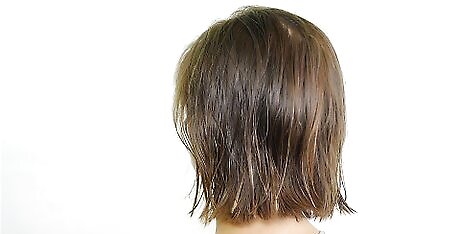
Wash or dampen your hair. Setting natural curls in a bob is easiest when your hair is already wet. Plan to style your hair this way when you are fresh out of the shower or have dampened your hair. To dampen your hair, you can put water in a spray bottle and mist your hair, or you can put your head under a faucet in a sink or bathtub.
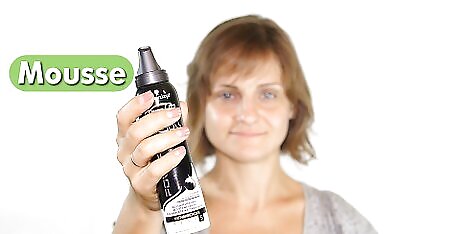
Select a styling product intended for holding curls. There are many products available on the market that are specifically designed for use on curly hair. Choose one that fits your type of hair (e.g. thick, thin, fine, damaged, et cetera). A mousse or a gel would work best. You can also select a hairspray to finish.
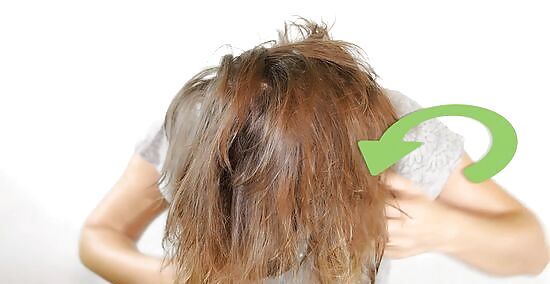
Bend at the waist and flip your head and hair upside-down. Styling your your hair upside-down will help to add volume. You can skip this step if you feel that your hair already has enough volume naturally.

Put a quarter-sized dollop of styling product in your palm and prepare to apply it to your hair. Rub your palms together so that the product spreads over both hands. Start with this amount for now; you can add more later if you feel that you need it.

Run your hands through your hair and scrunch it. It often works best to focus your hands on smaller sections of hair and gently push upward, toward your scalp, gently closing your hand over the hair to scrunch it as you do so. Make sure to apply product and scrunch all over your head. Some people forget about the bottom layer, but that can still be seen if it is left untouched. Scrunch your hair all the way to the back of your neck.
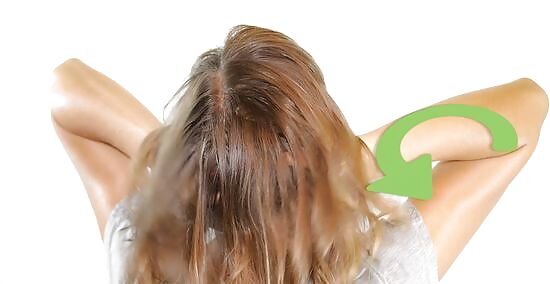
Stand up and flip your hair back over. You can apply more product to your hair, if you need to, and scrunch missed areas now that you are standing up. Use a mirror to help you spot missed sections of hair.
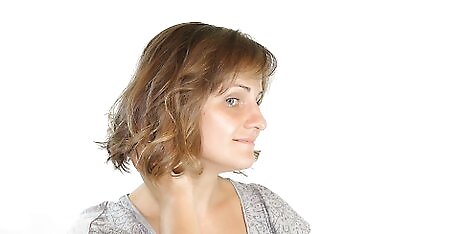
Allow your hair to dry. Oftentimes, this is enough for naturally curly hair to set well. However, there are a couple of additional steps that you can take, if you desire. Consider using a diffuser on your blow dryer and drying your hair with that. This both adds volume and curls your hair. Spritz hairspray onto your hair to really secure the curls. This could results in your hair looking “crunchy” and hard instead of smooth; it is up to your preference of how you want your hair to look.
Adding Beachy Waves to a Bob
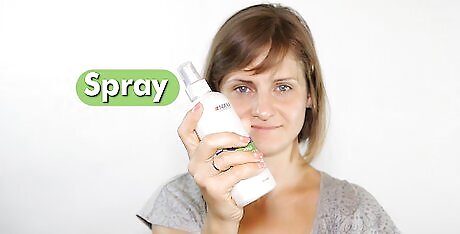
Get a texturizing hair product. There are many products today that are specially created to achieve this look. Sea salt sprays are popular, as are other similar products. If you do not currently own a product, then be sure to go to your local drugstore and buy one.
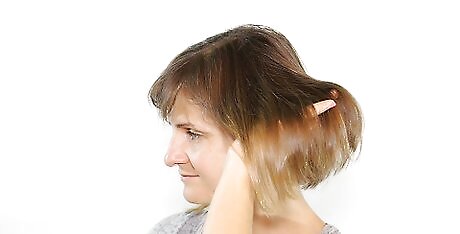
Start with hair that is air-dryed or still slightly damp. There are mixed reviews about which works best: adding beachy waves to completely dry hair or to hair that is still a little damp. You will have to determine what works best for your hair. It would be helpful to read the instructions on the texturizing product you own, as well.
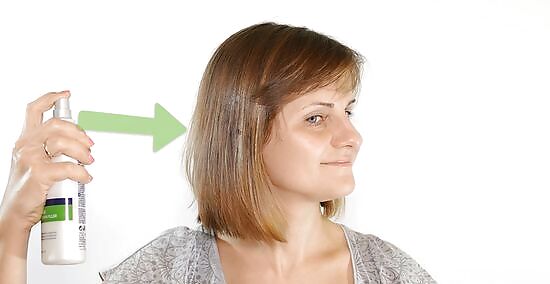
Spritz your hair with the texturizing spray. Be sure to spray all over your head. You can flip your head upside-down, as well, to reach the hair at the back of your neck.
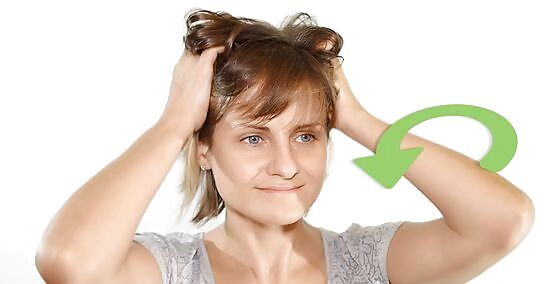
Scrunch your hair with your hands. For some people, the scrunching method works well to help them achieve the “beachy waves.” Gather small sections of hair in the palms of your hands and gently push upward toward your scalp. Slowly and gently close your hand around the hair as you push to scrunch it. This might work better and add more volume to your hair if you flip your head upside-down to scrunch.
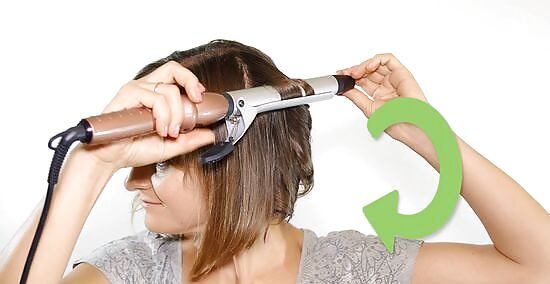
Add waves to your hair with a curling wand. If the scrunching method does not work for you, you can consider adding slight waves to your hair with a curling wand after spritzing the texturizing product. Wrap 2-inch sections of hair loosely around the wand, no more than 2-3 times, so that it creates waves rather than curls. Work all the way around your head in 2-inch chunks of hair. Check for any straight strands that linger and wrap them around the wand. Be sure to hold your fingers away from the curling wand when holding the ends of the hair so that you do not burn your fingers.
Finish with more texturizing spray. After you scrunch or curl, gently run your fingers through your hair to loosen the waves. Then, add more texturizing spray to finish and hold the waves. You could spritz your hair with hairspray, instead of more texturizing product, if you would like a better hold.












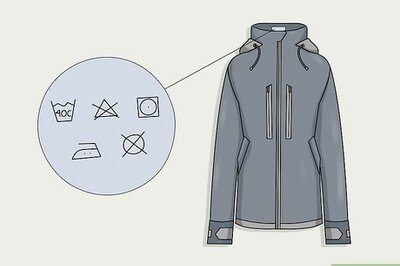





Comments
0 comment